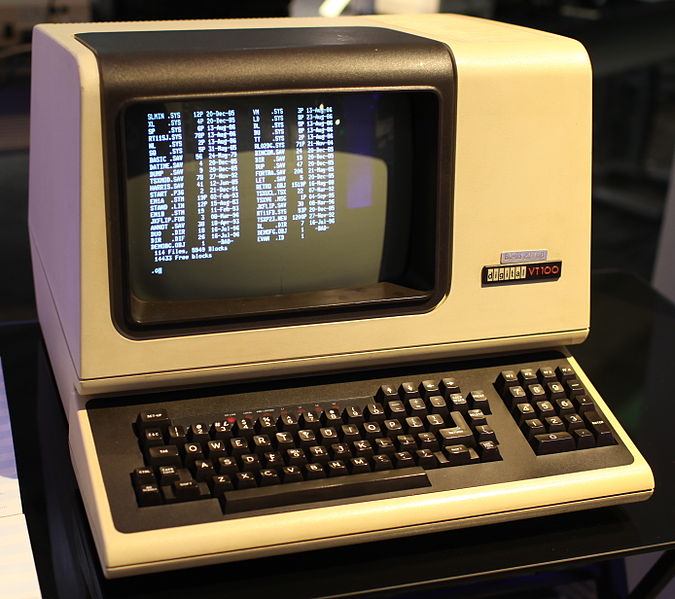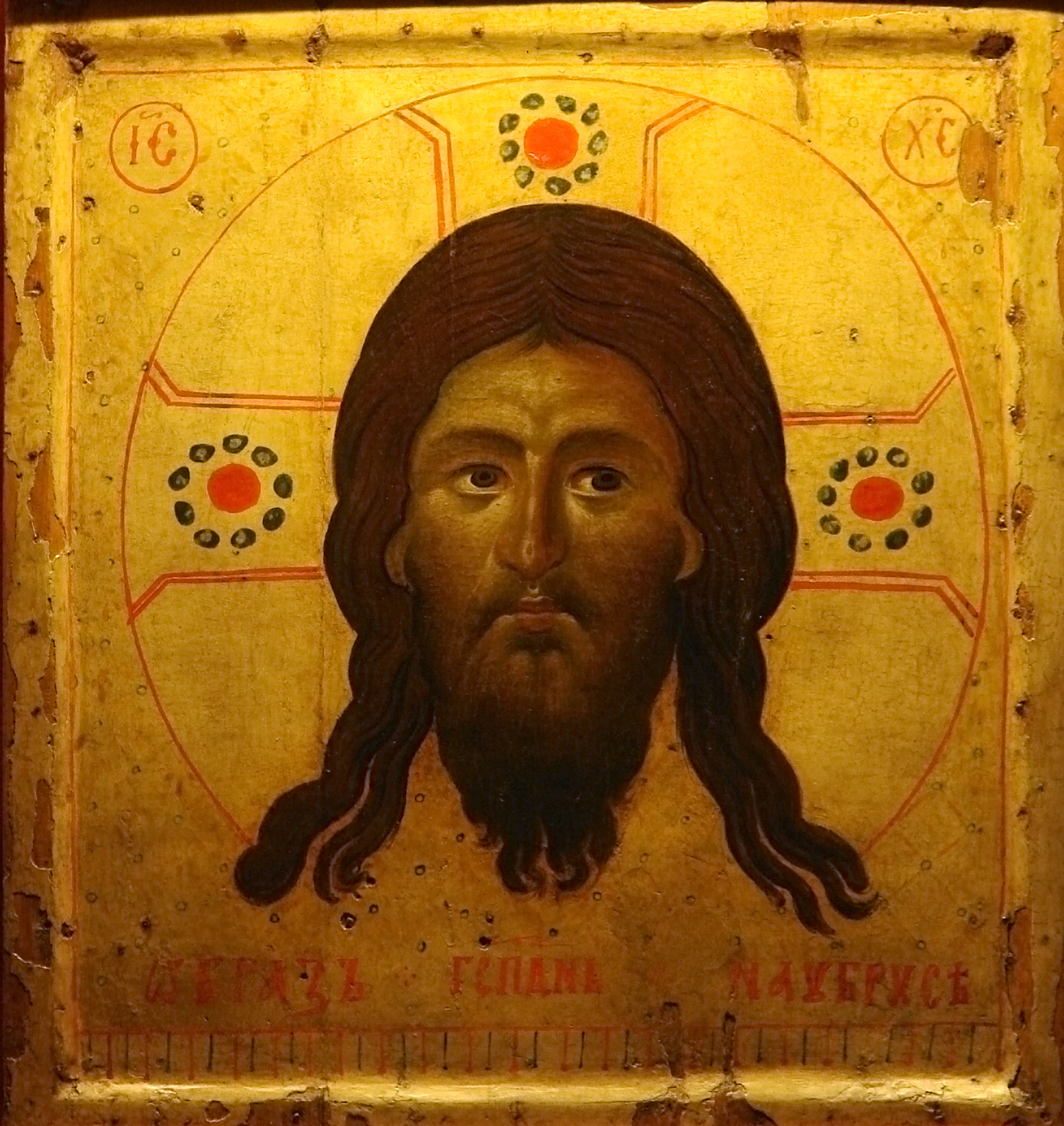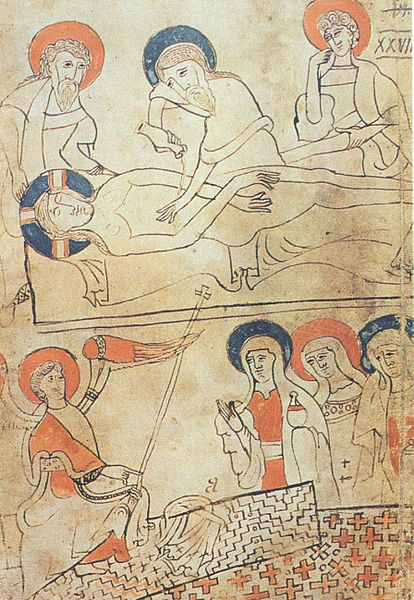Further to my post, "Were the radiocarbon dating laboratories duped by a computer hacker?: My replies to Dr. Timothy Jull and Prof. Christopher Ramsey," Prof. Ramsey gave the misleading impression in his email:
"Yes – I agree with all that Tim says. This would seem to be a suggestion from someone who does not know what computers were like in the 1980s. In the case of Oxford the AMS had no connection to any network (and indeed even today our AMS control computers have no network connections). The software was very simple just outputting counts of 14C and currents measured. Age calculation was done offline and could just be done with a calculator, or by a simple program into which you typed the numbers from the AMS."that the AMS control console computer in the Arizona University's radiocarbon dating laboratory was little more than a calculator. Which
 led Dan Porter to
led Dan Porter to [Right: Arizona radiocarbon laboratory's AMS control console computer just after it had displayed on its screen the uncalibrated `radiocarbon date of the Shroud', which was then calibrated to "1350 AD" (Gove, H.E., 1996, "Relic, Icon or Hoax?: Carbon Dating the Turin Shroud," pp.176H, 264). I have identified this as probably a DEC VT-100 terminal connected to a DEC VAX-11 32-bit minicomputer-see below.]
question in a recent post on his blog, whether the AMS control console computers were even "programmable." My reply to Porter on his blog, included:
>Has he determined if the AMS Control Consoles at all three labs had programmable computers
There is no such thing as a NON-programmable computer. Prof. Ramsey confirmed that the AMS control console computers were under the control of "software," which is just another name for a program. When I get to that part of my series I will give further evidence about this.
I then added a further comment on Porter's blog (lightly edited):
>Has he determined if the AMS Control Consoles at all three labs had programmable computers
I meant to add, but I could not remember the name, that one of those listed by Harry Gove as present at Arizona’s C-14 dating of the Shroud was "Art Hatheway" who was "connected with the Arizona AMS facility" and was a signatory to the 1989 Nature paper:
"The next morning at about 8 am (6 May 1988) I arrived at the Arizona AMS facility ... I would be the only one present outside the Arizona AMS group. Doug immediately asked me to sign the following statement:"We the undersigned, understand that radiocarbon age results for the Shroud of Turin obtained from the University of Arizona AMS facility are confidential. We agree not to communicate the results to anyone-spouse, children, friends, press, etc., until that time when results are generally available to the public." It had been signed by D J Donahue, Brad Gore, L J Toolin, P E Damon, Timothy Jull and ART HATHEWAY, all connected with the Arizona AMS facility, before I signed. My signature was followed by T W Linick and P J Sercel, also from the Arizona facility." (Gove, 1996, p.262. My emphasis).
A Google search on "Art Hatheway Arizona" (without quotes) had turned up an obituary of an "Arthur Loyal Hatheway" who was "Senior Staff Engineer at the AMS Lab in the Physics Department at U of A." and a "computer programmer":
"Arthur Loyal Hatheway Obituary HATHEWAY, Arthur Loyal, born in Los Angeles on March 26, 1940 to Philip and Pauline Hatheway, went suddenly to Jesus on October 11, 2008. ... In 2006, Art retired from his position as Senior Staff Engineer at the AMS Lab in the Physics Department at U of A. There his skills as COMPUTER PROGRAMMER and small instrument engineer, his thorough nature and precise workmanship, his understanding of chemistry and physics, as well as his abilities to invent and mentor, WERE PUT TO GOOD USE. Art met Jesus in 1992. This new relationship changed his perspective on life ... Arizona Daily Star on Oct. 14, 2008".
I am NOT alleging that Art Hatheway was one of the hackers, just that there was at least one member of the Arizona C-14 lab staff who was a "computer programmer" and indeed a "Senior Staff Engineer," which is indicative of a high level of sophistication of the Arizona C-14 lab’s computers, and presumably of the other C-14 labs’ computers.
And that presumably a major role of Senior Staff Engineer Hatheway was ensuring the AMS control console computer program controlled the AMS C-14 dating process:
"The first sample run was OX1. Then followed one of the controls. Each run consisted of a 10 second measurement of the carbon-13 current and a 50 second measurement of the carbon-14 counts. This is repeated nine more times and an average carbon-14/carbon-13 ratio calculated. ALL THIS WAS UNDER COMPUTER CONTROL and the calculations produced by THE COMPUTER were displayed on a cathode ray screen." (Gove, 1996, p.264).I had originally thought that the computer which controlled the AMS dating was different from the AMS control console computer, but according to Gove’s words above, they were ONE AND THE SAME. Now a lab does not need to employ a "Senior Staff Engineer" who is also a "computer programmer" and who "put[s] to good use" those "skills," on a computer which Prof. Ramsey gave the misleading impression was little more than a calculator:
"The software was very simple just outputting counts of 14C and currents measured. Age calculation was done offline and could just be done with a calculator, or by a simple program into which you typed the numbers from the AMS." ("Comment Promoted: On the Hacking Hypothesis," March 9, 2014).and which led Dan to question whether it was even "programmable".
Now Prof. Ramsey is highly computer literate, being himself a computer programmer, as the author of "OxCal" a computer "program ... intended to provide radiocarbon calibration":
"OxCal The OxCal program is intended to provide radiocarbon calibration ... For further information contact the author: Prof. C. Bronk Ramsey ..."So Prof. Ramsey presumably KNOWS VERY WELL that the AMS control system computers at Arizona, Zurich and Oxford were not little more than "a calculator" but were PROGRAMMABLE computers, controlling the entire complex AMS radiocarbon dating process as well as outputting the uncalibrated C-14 dates of each sample onto their screens.
I personally find Prof. Ramsey’s (and Dr Jull’s) defensiveness significant.
But again, I repeat, that I am NOT alleging that the late Art Hatheway (or Prof. Ramsey) was one of the hackers. All I am seeking to establish is that the C-14 labs’ AMS control console computers were PROGRAMMABLE. And therefore HACKABLE!
I regard this evidence that the AMS control console computer at Arizona radiocarbon dating laboratory (and therefore presumably at the Zurich and Oxford laboratories which had the same Accelerator Mass Spectrometry system), was programmable and therefore hackable, as a further step forward in my proposal that the radiocarbon dating laboratories at universities in Arizona, Zurich and Oxford, which in 1988 dated the Shroud of Turin as "mediaeval ... AD 1260-1390," against the preponderance of the evidence, may have been unknowingly duped by a computer hacker.
PS: I have posted the following as a comment on Dan Porter's blog (slightly edited):
I decided to Google the name which was after Art Hatheway's on Prof. Harry Gove's list of those present at the Arizona lab's 6 May 1988 dating of the Shroud. It was "T. W. Linick". I found out his name was "Timothy W. Linick". I then discovered that he died on June 4, 1989, aged 42, a few months after the Nature paper to which he was a signatory appeared, on February 16 of that year. Moreover, it was rumoured that Linick committed suicide.
It may be significant that Karl Koch, a self-confessed hacker who had worked for the KGB, died on May 23, 1989, less than 2 weeks earlier than Linick [but see 31Mar15 that the KGB executed Koch between 23 and 30 May 1989, and Linick on 4 June 1989 - the day after the West German police had publicly identified Koch's burnt body on 3 June 1989!], in what appeared to be an execution designed to look like suicide.
I then Googled the names of other signatories to the 1988 Nature paper but found no other untimely deaths. However, as the Wikipedia article on Karl Koch notes, Koch's fellow hackers Pengo (Hans Heinrich Hübner), and Urmel (Markus Hess) also confessed that they had worked for the KGB but were not eliminated.
While I do not claim that Timothy W. Linick WAS a hacker, nor that his untimely death WAS suicide, let alone an execution by the KGB designed to look like suicide, it nevertheless is worth keeping in mind as a possible piece of the jigsaw.
This will no doubt be dismissed as a "conspiracy theory" by those who prefer mindless slogans to thinking. But it is a FACT that the KGB did CONSPIRE with hackers, notably Karl Koch, of whose death Wikipedia notes that, "there is little evidence supporting suicide and many believe that Koch was killed in order to keep him from confessing more to the authorities". And it is a FACT that the KGB did CONSPIRE with hacker Markus Hess whom Clifford Stoll caught.
PPS: Here is a further comment I posted to Dan Porter's blog (with light editing):
I have discovered what make and probably the model of the AMS control console computer was. On Googling "Linick Arizona computer" (without the quotes) I found the paper, Linick, T.W., et al. 1986, "Operation of the NSF-Arizona accelerator facility for radioisotope analysis and results from selected collaborative research projects," Radiocarbon, Vol. 28, No. 2a, pp.522-533.
In it the late Dr Linick, described the computerised process that Prof. Gove wrote of Arizona lab's AMS control console computer, and wrote that it is a "DEC computer system":
"The DEC computer system largely controls the cycling of isotopes, accumulation of data, and calculation of results for each 15-minute run."
"DEC" stands for Digital Equipment Corporation, the maker of the powerful PDP and VAX range of minicomputer which were very popular in laboratories in the 1980s. However I have been unable to discover what model it was, e,g. PDP-11, VAX-11, etc.
Googling "DEC" and then selecting "images," the Arizona Lab's AMS  control console computer in the photo on page 176H of Prof. Gove's book (see above), looks like a DEC VT-100 terminal.
control console computer in the photo on page 176H of Prof. Gove's book (see above), looks like a DEC VT-100 terminal.
[Left: DEC VT-100 terminal: Wikipedia, 29 March 2014]
If that is so, and given that Arizona's AMS system was installed in 1981, its AMS control console computer was probably a 32-bit VAX-11:
"In 1976, DEC decided to extend the PDP-11 architecture to 32-bits while adding a complete virtual memory system to the simple paging and memory protection of the PDP-11. The result was the VAX architecture, where VAX stands for Virtual Address eXtension (from 16 to 32 bits). The first computer to use a VAX CPU was the VAX-11/780, which DEC referred to as a superminicomputer. Although it was not the first 32-bit minicomputer, the VAX-11/780's combination of features, price, and marketing almost immediately propelled it to a leadership position in the market after it was released in 1978. VAX systems were so successful that in 1983, DEC canceled its Jupiter project, which had been intended to build a successor to the PDP-10 mainframe, and instead focused on promoting the VAX as the single computer architecture for the company. Supporting the VAX's success was the VT52, one of the most successful smart terminals. Building on earlier less successful models (the VT05 and VT50), the VT52 was the first terminal that did everything one might want in a single chassis. The VT52 was followed by the even more successful VT100 and its follow-ons, making DEC one of the largest terminal vendors in the industry. With the VT series, DEC could now offer a complete top-to-bottom system from computer to all peripherals, which formerly required collecting the required devices from different suppliers." " ("Digital Equipment Corporation: VAX," Wikipedia, 10 March 2014).
Whatever DEC computer system it was, whether a PDP or VAX, it CERTAINLY was programmable and therefore HACKABLE!
Continued in "Were the radiocarbon dating laboratories duped by a computer hacker?: Revised #2 (Vignon markings).
Posted 31 March 2014. Updated 26 May 2025.

















.jpg/225px-Don_Bosco_@_Torino,_1880_(original).jpg)





